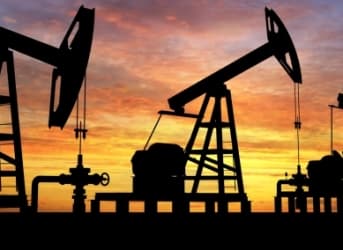As investors move into the spring, perhaps the biggest question to consider is when the Fed will next raise interest rates. The simple answer is that there are three realistic dates: March, June, and September.
The key for the Fed and for investors though, is that a premature interest rate increase could hamstring the U.S. economy just as it is starting to get a modest bit of momentum. This risk is particularly important right now, because the U.S. economy is just about the only major country that is seeing any appreciable economic growth. A premature interest rate hike could also have significant impact on oil prices.
Rates have been mostly falling for nearly 35 years now. Obviously that cannot continue forever. With rates near zero today, future declines aren’t feasible. But the timing of a rate increase draws a lot of conversation from economists. Related: Saudi Oil Minister Says Oil Production Cut “Not Going To Happen”
(Click to enlarge)
What could happen if the Fed raises rates too soon?
Normalizing interest rates can actually be a good economic omen – not because raising rates is necessarily good, but because normalizing rates mean an improving economy that justifies higher rates. But as even Fed members are indicating right now, that’s not the situation the country is facing. There are at least three unmitigated disasters that could occur if the Fed is premature in its judgement. Each of these risks becomes much more severe if the Fed raises rates by 1 percent or more over the next year. That level of rate increase would be way too much, way too soon. Related: This Is What Will Cause A Lasting Oil Price Rally
First, businesses, and oil companies in particular, could find they cannot handle the additional debt costs on their balance sheets and could be forced into financial distress. Ultimately this could lead the economy to slide back into a recession. Companies know that the low interest rate environment won’t last forever. As a result, many big firms have been adding to their debt levels and issuing bonds at a record breaking pace. If the Fed starts to raise rates rapidly, all of that new issuance will evaporate overnight. In addition, oil companies might find their liquidity drained by banks since they will have to have more income to support each dollar of debt or each dollar of existing credit facilities.
If a broad set of firms slows investing in new equipment, new workers, and stock buybacks, that would lead to slowing demand across the economy. This could drive oil demand lower still, leading to even lower prices. Business demand has been an extremely important growth driver of late, with a 3.2 percent increase in business investment last year for instance. The last thing the U.S. economy needs is slower growth, but that’s exactly what will happen if rates rise too fast as companies pull back on their spending plans. The result could be a mild recession. Related: Rudderless OPEC Doesn’t Know How To Respond To U.S. Shale
Second, an increase in interest rates, all things being equal, will strengthen the dollar. Since oil is priced in dollars, it could put downward pressure on oil prices. Not only would that be a problem for the entire oil industry, but as we have witnessed in recent months, abnormally low oil prices have roiled financial and currency markets around the world.
Third, if the Fed raises interest rates too much too soon, it could create further pressure on oil company stocks. In particular a rate increase could cause the stock market to become a less attractive compared to bonds that yield more after a rate increase. The shift in demand between asset classes could cause a stock market collapse leading to a wealth drain that would hinder energy firms raising equity capital and crush the wealth of investors around the globe. This is a real risk and one that even some members of the Fed policy makers think is not being fully appreciated by the markets. This risk is perhaps the most likely disaster to occur from a premature Fed rate hike.
By Michael McDonald Of Oilprice.com
More Top Reads From Oilprice.com:
- Electric Car War Sends Lithium Prices Sky High
- Gulf States Not Willing To Cut Production Despite Asset Depletion
- Wall Street Won’t Give Up On Its Energy Bets



















